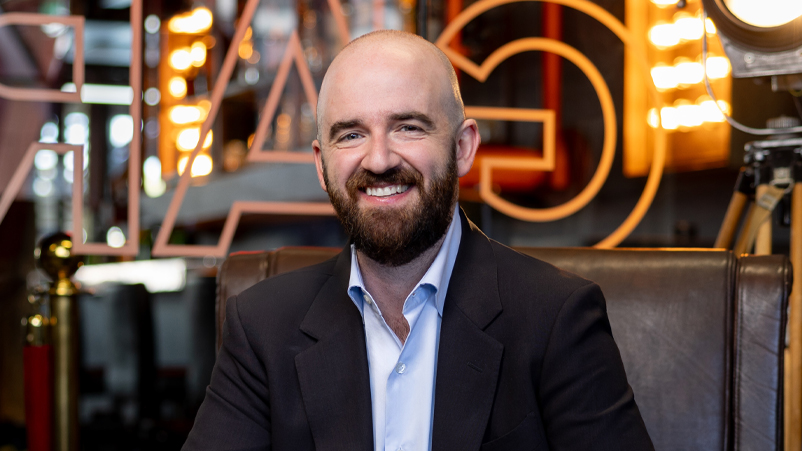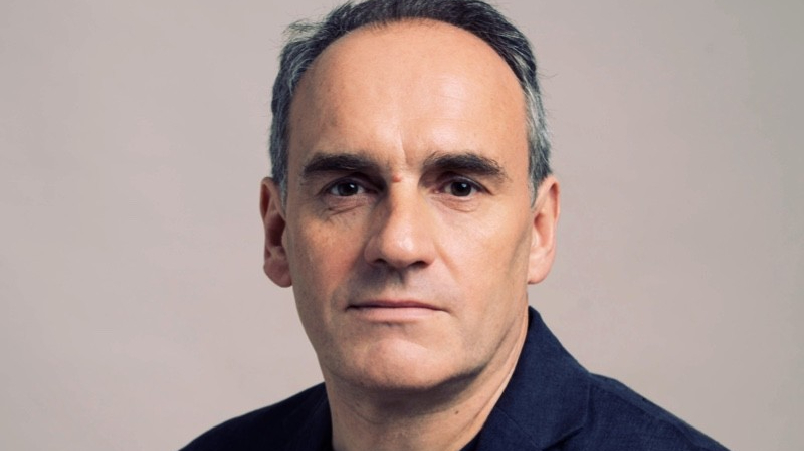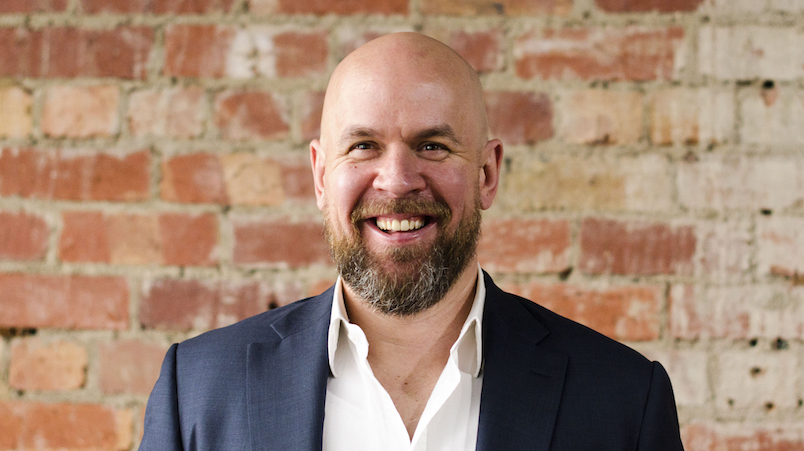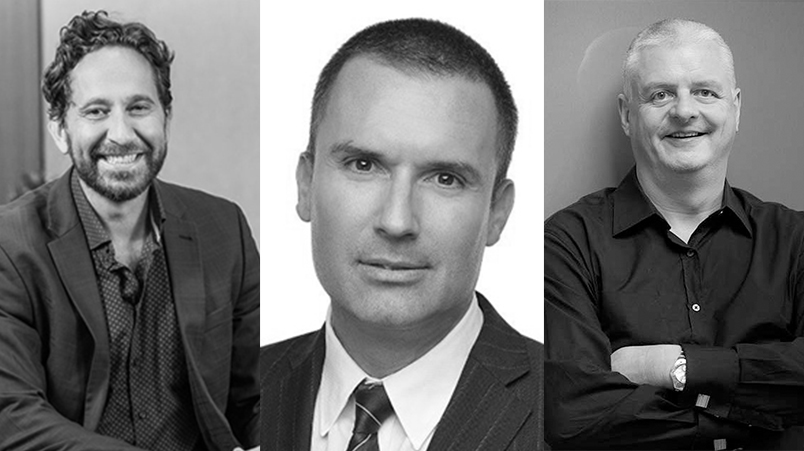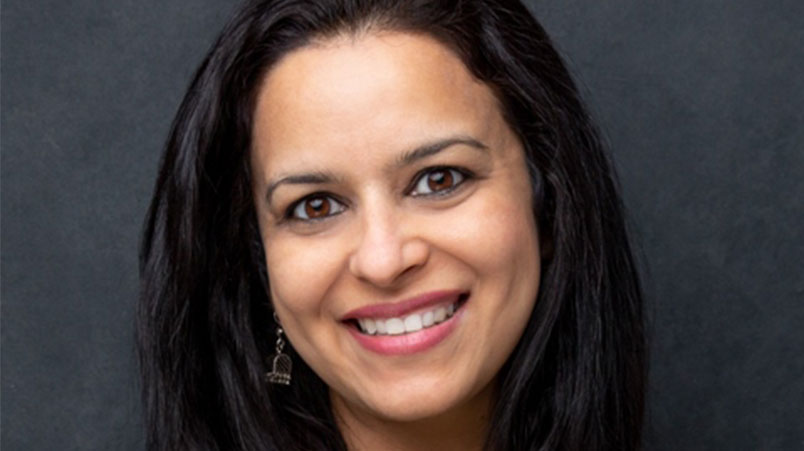ANZ CMO Sweta Mehra on reshaping and upskilling marketing, finding budget allies, redefining personalisation, massive in-housing savings and rewiring its tech stack to unlock $100m
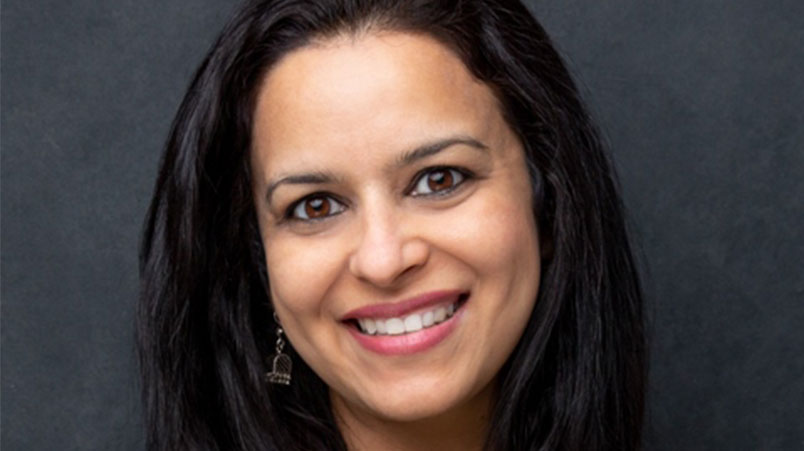
Sweta Mehra: "Great agencies are the best gifts that any marketers can get. But it pains me to pay $5,000 for a tiny video edit that my son could do."
Sweta Mehra has wasted little time since swapping P&G for ANZ. In four years, the CMO has overhauled marketing, creating a 'federated' approach with units responsible for business results and winning budget-defending executive allies. Now she’s pushing harder into personalisation, building a new market mix modelling approach, driving deep cost efficiencies through in-housing and championing a major upskilling programme, all while rewiring the tech stack to unlock nine digit revenue gains. Now she’s looking for more – can she make customers “fall in love” with ANZ?
What you need to know:
- ANZ CMO Sweta Mehra swapped almost two decades at P&G for ANZ, tempted from CPG to banking by data riches.
- Four years in, she’s been decentralising marketing, embedding responsibility across the organisation via a “federated” approach and tying marketing to business results.
- So now other functions defend marketing budgets.
- Mehra has also streamlined and rewired martech to unlock a predicted $100m revenue increase over the next three years – and help drive personalisation beyond ‘customer journeys’ and into real-time decisioning.
- Her team is also driving work on a new market mix modelling approach that looks at hard business results and is more forward than backward looking. Accenture Interactive is involved.
- Mehra is also a big fan of in-housing. She thinks it’s a waste of the bank’s money to pay thousands of dollars for collateral tweaks a kid could do and says it’s faster and better.
- But she’s looking at a hybrid model and says ANZ will always back quality agency partners to do the strategic stuff.
- Meanwhile, the bank has launched a major upskilling programme to build the marketers it needs for today and tomorrow – and bake marketing into the broader organisation.
I used to be the one defending marketing budgets. But over a period of time, we've linked the marketing performance to business performance in a tight, integrated manner. So now when marketing budgets are being talked about, it's the business leaders who are talking about why marketing is important.
After nearly two decades at P&G, Sweta Mehra joined ANZ. Four years in, she’s shaken up the bank’s approach to marketing – decentralising and embedding responsibility so that different business units have become champions of marketing – while upskilling teams and pushing deeper into personalisation. It’s no longer about “customer journeys” but “basically, decisioning on the spot that we are moving towards,” says Mehra.
The approach is paying dividend, protecting spend even amid the “Hunger Games season” of budget setting, while putting wastage to better use. Meanwhile, a rewiring and de-duplification of ANZ’s tech stack to directly join the dots between sales and marketing is expected to drive “revenue uplift of a hundred million dollars over the next three years” while pushing conversions from “less than one per cent to 30-40 per cent” as customers receive callbacks in 15 minutes versus five days… or not at all as leads got lost.
Next up is in-housing, where Mehra sees cost savings of “70-80 per cent”, much faster turnaround times and higher quality, as the “grunt work” is marshalled closer to ANZ’s brand guidelines instead of being “federated” across a supply chain of sub-contractors. She plans to use the savings to reinvest in marketing “that will actually make a bigger difference to our customers.”
On top of that, the bank has launched a major upskilling programme to create the marketers it needs for the future as well as today, and alongside Accenture Interactive, is building a new market mix modelling approach to take a similarly forward-looking view to media investment.
Suffice to say Mehra and her team subscribe to the view that time is money – and have wasted precious little.
A confederacy of smarts
The big shift at ANZ began in 2018, when it introduced the Agile methodology across the business, creating “autonomous squads” tasked with specific missions. For marketing, that meant moving “about 70 per cent [of staff] into multi-functional independent teams” working on delivery, and the remainder into a “centre of expertise, leading more on brand strategy, thinking governance, sponsorship etc.,” says Mehra.
“So that is the ‘federated model’ we are working on. It has the advantage of making marketers at ANZ extremely close to the business, closer than we have ever been, and helping them better understand the business dynamics, business models ... and be responsible for the results much more closely than before.”
That structure increases pressure on those teams to deliver, and on the centre to “orchestrate it all quite beautifully,” says Mehra. “That becomes a bit of a challenge,” she admits. But if they can get the balance right, “frankly, the rest is easy”.
We became students of funnels and started going after every opportunity that we were leaving on the table. And I'm really proud of what this team has done – and therefore the reputation we have inside the bank of being critical partners to driving revenue growth.
Winning marketing allies
The upshot of bringing marketers closer to other business units – and results – is that marketing now has more allies within the bank. Does that mean marketing is no longer viewed as a cost? Mehra doesn’t go that far. But its perception has shifted.
“The way the P&Ls are constructed, marketing will always be a cost. But where the needle is shifting is when we get into conversations around budgets,” she says.
“I used to be the one defending marketing budgets. But over a period of time, we've linked the marketing performance to business performance in a tight, integrated manner. So now when marketing budgets are being talked about, it's the business leaders who are talking about why marketing is important. They are saying ‘I’m not delivering my numbers because marketing [resource] is not there’ or ‘to deliver my numbers, I want more marketing'. So I have a lot more allies and partners,” adds Mehra. “I definitely don’t feel as lonely as I did four years ago.”
Mehra thinks the decentralised, federated approach has played a major role in driving that outcome.
“Definitely, because the marketing team is talking the business’ language and then centrally Kjetil [Undhjem, ANZ’s head of marketing and brand strategy] and I drive a lot of discipline on numbers and performance measures. So it is a combination of both – our driving the discipline and the business teams and the marketing teams being completely aligned on our common objective,” she says.
“I don’t think any conversation on budget is an easy conversation. But I have more partners, people who are … willing to cut in other areas to make sure that we are funding marketing. So that change is definitely there.”
The three Rs: reputation, revenue and relationships
When she joined ANZ, Mehra says the bank was always known for the strength of its creativity. “If you look globally, ANZ Bank has been the most recognised bank in terms of number of awards that we won over the years.’ She says “huge credit” is due to leaders past and present “who built that culture of creativity and focus on consumer and great communication.”
But she says it was also “very obvious that marketing was a bit distant… to defining and driving customer strategy”. Mehra aimed to address that, “while preserving what the marketing function is very good at, “which is driving reputation for the bank and driving brand strength. But it was about how do we accelerate what I call the other two Rs – revenue growth and deepen the customer relationships at ANZ”.
For all that creative recognition, she suggests, “there was very little with which consumers could differentiate ANZ from other banks, but for a blue colour.”
That meant redefining customer focus and the brand ANZ wanted to build – and it also meant redefining marketing’s role around those three Rs.
“We had to start learning to act as a glue by providing a bit more of the strategic leadership on driving reputation. Then on revenue, frankly, it meant that we became students of funnels and started going after every opportunity that we were leaving on the table. And I'm really proud of what this team has done and therefore the reputation we have inside the bank of being critical partners to driving revenue growth.”
The third R is the current focus, which is around “building the whole technology stack to deepen the relationship,” says Mehra. “There is a part around driving experience design, where we have done a fair amount of work. But how do you embed that day-to-day and how to use technology to do that via personalisation? That is where my focus is.”
Personalisation is a big, big pillar. I probably spend 40-50 per cent of my time in this space – partly because I love learning and still feel I know so little. But partly because the upside opportunities from a customer experience and revenue standpoint is massive.
Personalisation: Decision time
The promise of genuine personalisation was one of the reasons Mehra switched from CPG to banking, “because it’s so data rich … I knew I would never get to the cutting edge in some of those industries, partly because you don’t own the data.”
It now takes up the single biggest chunk of Mehra’s time. But when she arrived at ANZ, that nirvana was some way off: “We had very low personalisation, even from digital channels.”
However, there have been gains of late: “We’ve gone from almost nothing two years ago to about 75 per cent of our content on dotcom now being personalised… and about 90 per cent of the content on our secure channels is personalised as of April/May this year.”
Mehra says the benefits are myriad: “NPS scores have gone up dramatically, because customers are getting more relevant information: we’ve gone from -55 to +15 over the same time period. Sales have increased as well, because consumers are finding more relevant content and they are starting the applications.”
Personalisation within apps remains a work in progress, but the main aim across the piste is to go beyond ‘the customer journey’. “It’s basically decisioning on the spot that we are moving towards,” says Mehra. “I would say we’re still more towards the journey right now and… in parts of the business, we are trying to make the leap to where event-based decisioning comes to life.”
If ANZ can reach a point where its customers feel understood and valued, “that we care for you and are here to do the right thing for you, not just share more marketing offers, but provide the right notifications, nudges, insights to help you improve your financial wellbeing, hopefully the customer will reward us by staying longer and having more products with us,” she says.
“So it’s a big, big pillar. I probably spend 40-50 per cent of my time in this space – partly because I love learning and still feel I know so little. But partly because the upside opportunities from a customer experience and revenue standpoint is massive.”
Much of the tech stack implementation was done for a narrow use case [and] we did not have a holistic view of customer interactions ... By reallocating in the right time to the right channel, we are seeing a revenue uplift of a hundred million dollars over the next three years.
Cracking the stack
ANZ’s tech stack is crucial to nailing personalisation. Mehra, who studied engineering before taking an MBA in marketing, finance and HR, thinks it is now a point where it can deliver. But there has been major effort to get to that point.
“When you look at the stack, we had everything in the bank, sometimes too many … We had multiple [pieces] of the same solutions,” she says. Meanwhile, “much of the tech stack implementation was done for a narrow use case [and] we did not have a holistic view of customer interactions across all channels. So my job over the last two years has been to identify the key stakeholders between data technology and marketing function, bring us together and start connecting them all one by one, such that the data, decision and the content are all in sync.”
That work is starting to pay dividend: “Frankly, it’s why we’re seeing the value in simple things like connecting digital leads that the marketing programme was generating for our frontline channels – be it mobile, into branch and contact centre,” says Mehra. “By reallocating in the right time to the right channel, we are seeing a revenue uplift of a hundred million dollars over the next three years.”
Meanwhile, “we are seeing conversions which are 30-40 per cent versus earlier, when I could see they were [previously] less than one per cent… We were generating the leads but they were getting lost in our databases.”
Sometimes, says Mehra, it’s about doing the basics: “just rewiring things… and as we have done that, I’m pretty sure it will be one of our biggest drivers of customer experience, improved financial wellbeing [for customers], and higher revenue growth for ANZ.”
What’s under the hood?
Grappling with multiple CRM systems, ANZ recently standardised on Salesforce “pretty much across the organisation”. Meanwhile it had “pretty much the whole suite of Adobe inside the bank”. From a data perspective, it has used “Teradata and Google Cloud Platform (GCP) in different parts, and that is how we are consolidating in what we call the ‘analytical marketing master’,” says Mehra.
Like Commbank, ANZ is also using Pega for decisioning, or as Mehra puts is “to be a central brain – we think it is fantastic.”
“So I would say the future tech stack will have Pega, Salesforce, parts of Adobe – not all of Adobe – and of course, continue relying on GCP and Teradata, but GCP in the future more and more.”
We broke down 19 capabilities that we think are critical for the future of marketing – or even current marketing. We broke that down into four competency levels and then we mapped every role inside the organisation to those nineteen capabilities and four competencies.
Building smarter marketers
Tech is nothing without the people able to make it work. But Mehra is confident that ANZ’s internal programmes – its Brand Academy and Marketing Masters programme – can add significant capability to that provided by vendors and its existing teams, and the additional resource it is hiring.
But the programmes are much broader than tech – and go beyond Mehra’s three Rs of reputation, revenue and relationships.
“We needed to train our marketers, uplift them and build their capabilities,” says Mehra. “We need to make sure we are building a future ready, commercially savvy, tech and data proficient marketing function, which can be extremely customer centric, but can also be very innovative and help us accelerate growth for ANZ across our businesses.”
So ANZ corralled its marketing function and senior leaders across the enterprise and talked about the skills it will require in future.
“We broke them down together into 19 capabilities that we think are critical for the future of marketing – or even current marketing. We broke that down into four competency levels and then we mapped every role inside the organisation to those nineteen capabilities and four competencies,” says Mehra.
“The intention is that each person can then become their own boss in deciding where they want to take their career, and where they want to grow.”
To date, she says about 90 per cent of marketing personnel have assessed where they stand, and created a learning plan with their managers. “Our expectation is that as an organisation that will uplift overall at about 10 per cent,” says Mehra. In the meantime, the bank’s internal scores for marketing staff career development have soared as a result.
In tandem, ANZ has created its ‘Brand Academy’, a marketing-led programme that is also designed for multifunctional teams and which is giving the broader bank a more cohesive approach to common elements, such as proposition design.
“So we partnered with the design function, we put in the best learnings from a lean design principles standpoint: We got the best experts within ANZ and we created an ANZ way of designing propositions. Similarly, we have media workshops; we now have data and insights coming up, and personalisation – so there is a continuous programme and we are rolling out more and more modules,” says Mehra. “So far, we've had more than 700 people who've gone through some of these modules with very high scores – and it's great to see.”
“So that's what we're doing, slowly training the organisation and then overall planning the whole big Brand Academy push.”
Most market mix modelling efforts are usually past focused. They tell you what you did the previous quarter, what worked and what did not. We want ours to be more forward-facing.
Market mix modelling: looking forward, not back
ANZ now aims to take a similarly forward-looking view on media investment – and Mehra is now involved in building a new market mix modelling (MMM) approach.
“Most market mix modelling efforts are usually past focused. They tell you what you did the previous quarter, what worked and what did not. We want ours to be more forward-facing,” she says.
“So you’re using the past, but you want to look at future sufficiency and say ‘if I need to grow my business by X per cent, what needs to be true and what is the most optimum use of our spend to get us to do that?' So changing from rear view to future focus.”
The goal is also to move away from purely marketing drivers to link business and commercial outcomes.
“I want to look at marketing spends, but I also want to look at pricing, at our policy settings. Because frankly, sometimes to grow the business, I should not be spending on marketing. I may need to spend more on pricing, or on distribution, or in operations to get more numbers being processed,” says Mehra. “And I think as a marketing team, if we just talk only marketing, but we don't talk overall revenue, we are doing the business a disservice. So the models we are looking at are truly whole of business."
Meanwhile, the MMM approach is being designed to be transparent, she says, rather than a “big black box” that hardly anybody understands.
“What we want is the ability to play around with different drivers of the business and plan for the future with our people – the multifunctional teams or the finance team, or the product teams, the channel teams or the marketing teams. We want them to be saying collectively, 'where should we go?' Because ultimately, it's about making the right decision for ANZ and balancing between all the different factors. So those are the three things that we are trying to solve for,” says Mehra.
“It’s early days, but hopefully it will deliver.”
Accenture Interactive has been tasked to help build it.
What Special Group has to crack
ANZ has just appointed Special Group to handle creative, tasked with bringing to life the bank’s ambition to own financial wellbeing.
“It’s a life-long journey. We are clear about who the customers are that will come on the journey with us. But we are very clear that the historical way in which we have communicated is not good enough, and we are also very clear that the role of the creative agency is not just in the communication. It will be in the way we design the experience, the way we, the creative agency partners with our digital team, shape the experiences in our app and websites or in our stores – and all of that will become as critical,” says Mehra.
“We think Special Group has the ability to land the creative platform across the brand and the products. But we also think they have the capability to be a partner in helping us become one more element of ‘the glue’ as you bring to life all the content and experiences across all channels.”
It pains me to pay two thousand dollars, five thousand dollars for tiny edits here for a banner, a tiny edit for a video which frankly my son could do.
In-housing: Better, faster, cheaper
ANZ is also pushing into in-housing creative media. Mehra says there are major savings to be made – and it would be financially irresponsible not to make more of them.
“Great agencies are the best gifts that any marketers can get. I need experts in a fast changing world. So we will always have a lot of strong partners from a media, PR, creative or digital standpoint. However, there's a massive amount of pressure on cost as you look at what marketing function needs to create,” she says.
“Historically, you would create one big TV campaign or a few different assets and you're done. Now you need to create so many assets. And I have to say it pains me to pay two thousand dollars, five thousand dollars for tiny edits here for a banner, a tiny edit for a video, which frankly my son could do.
"So the intention is that a lot of the strategic work, a lot of the innovation will keep happening with agencies outside. A lot of the grunt work, which is about scale, that is what we will be bringing in-house.”
However, ANZ will likely apply a hybrid model, taking an internal agency in-house, as it is already doing in New Zealand, “but at very low cost compared to our current world in Australia – so that is our lead option right now.”
The aim is to funnel those savings to fund bigger, more impactful work – and she says the savings are substantial.
“I would say we are getting about 70-80 per cent of the cost out. We are getting same day turnaround, and a couple of hours turnaround [for basic collaterals]. So it is about speed, cost, and frankly quality over a period of time. Because a lot of that work today gets federated out to many different contractors and smaller agencies,” says Mehra. “Sometimes the work doesn’t look like ANZ. We need to make sure that it looks and feels more ANZ – and it’s out faster.”
The year ahead
After all that, it seems superfluous to ask what the next 12 months holds for ANZ, but Mehra gamely condenses 3,000 words into fewer than 50.
“Our North Star is we still don't think our brand is differentiated enough. We want to go out and own financial wellbeing in the hearts and minds of our customers. While doing it, we want to accelerate revenue growth – and make customers fall in love with ANZ.”
Sounds simple enough…

